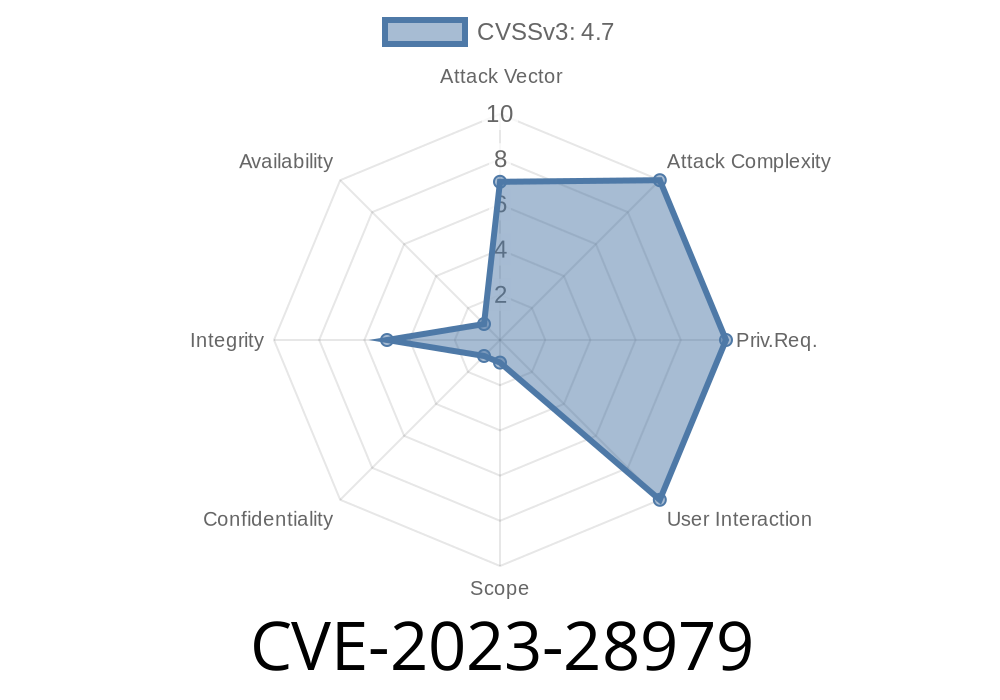The world of network security is full of tiny cracks that can become major breaks. One such issue emerged in 2023 with Juniper Networks’ Junos OS: CVE-2023-28979. It deals with how certain malformed IPv6 packets could bypass system integrity checks in specific use cases, which may lead to unexpected network exposure. This longread will break down what CVE-2023-28979 is, why it matters, and how attackers could exploit it, with exclusive distilled explanations and code-inspired samples. If you've ever wondered how a kernel mishandling can ripple through an enterprise, read on.
What Is CVE-2023-28979 All About?
In simple terms, CVE-2023-28979 identifies a vulnerability in the kernel of certain versions of Juniper Networks Junos OS (the heart of many big routers and switches). The problem is an Improper Check for Unusual or Exceptional Conditions specifically in 6PE (IPv6 Provider Edge over IPv4 MPLS) scenarios. Here, an unusual kind of IPv6 packet can, under certain conditions, bypass the integrity check and move through the network when it should be blocked.
- Scope: Unauthenticated attack is possible, but the attacker must be adjacent (on a directly connected network segment).
- Risk: Malformed IPv6 packets are not dropped as expected and can be forwarded, defeating the very security checks designed to protect network integrity.
6PE Configuration: The setup is running IPv6 networks over an IPv4 MPLS backbone.
2. Additional Integrity Check Enabled: Admins set a configuration to drop suspicious IPv6 packets (expecting extra protection).
3. Malformed Packet Arrival: An attacker on a directly connected network sends a specially-crafted, malformed IPv6 packet.
4. Integrity Check Misses It: The kernel’s integrity check doesn’t properly recognize the malformed state.
Why is this possible?
Due to improper validation inside the kernel’s packet handling routines, exceptional/malformed input doesn’t always trigger the drop logic. The result: forbidden packets can pass through—even if admins did everything recommended.
What Versions Are Affected?
This is a widely impactful vulnerability. If your device’s Junos OS version is older than any of these patches, you are exposed:
Demonstrating the Exploit (Code Snippet)
While the real exploit requires network equipment and privileged access, here’s a *conceptual* Python (Scapy) code that generates a malformed IPv6 packet to demonstrate the class of issue—a starting point for understanding:
from scapy.all import *
# Compose a malformed IPv6 packet (bad payload length, malformed extension header)
pkt = IPv6(src="fe80::1", dst="fe80::2") / IPv6ExtHdrHopByHop() / Raw(load=b"\x00"*120)
# Send the packet on a local interface (e.g., "eth")
send(pkt, iface="eth")
> NOTE: This script is for educational/research use on test labs only! Launching malformed traffic on production networks without consent is illegal.
The malformed packet should be dropped by Junos OS if the integrity check is working as intended. *Due to CVE-2023-28979, it could slip past, especially on an affected 6PE-configured Junos router.*
Let’s play through a practical attack flow for clarity
- Setup: An attacker is on the same enterprise segment as a Junos OS edge router operating as a 6PE Provider Edge.
Goal: Sneak malformed IPv6 packets past the supposed “drop” filter.
- Action: The attacker builds IPv6 packets with unusual extension headers or payloads that specifically target the flaw.
- Result: Packets traverse the router and enter the protected network segment, potentially hitting internal devices/services that expect only sanitized traffic.
What’s the Real-World Impact?
- Bypassing ACLs: If your security posture depends on “drop all malformed packets,” it is suddenly unreliable.
- Network Pivoting: Attackers could use malformed packets for reconnaissance, oute-of-band signaling, or laying groundwork for further exploits.
- Service Disruption: If internal systems can’t handle malformed packets safely, an attacker could cause crashes or DoS conditions downstream.
How Can You Protect Yourself?
1. Update Your Junos OS:
Immediate action is to patch! See Juniper’s advisories and deploy updates beyond the fixed releases listed above.
2. Network Segmentation:
Restrict the network segments that can send traffic to edge routers: only allow trusted peers.
3. Deep Packet Inspection:
Deploy external firewalls that robustly enforce IPv6 integrity in addition to OS-level controls.
4. Monitor for Anomalies:
Log and alert on malformed packet patterns—use tools like Zeek or Suricata.
References
- Official CVE-2023-28979 Record (NIST)
- Juniper Security Advisory: JSA71617
- Scapy: Python packet crafting tool
Conclusion
CVE-2023-28979 is a reminder of how even top-tier networking gear can have gaps. This bug isn’t a remote code execution or a massive DoS attack, but its subtlety—bypassing assumptions that your firewall/integrity drops are reliable—makes it dangerous in the right context. If you use Juniper, update now and segment vigilantly.
Stay safe and keep patching!
*(If you found this explanation helpful, consider sharing with your NetSec team or following for deeper vulnerability deep-dives!)*
Timeline
Published on: 04/17/2023 22:15:00 UTC
